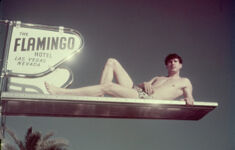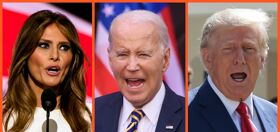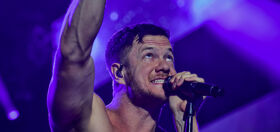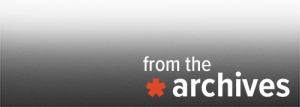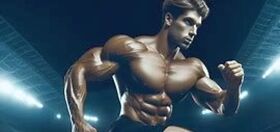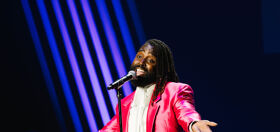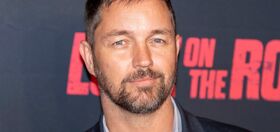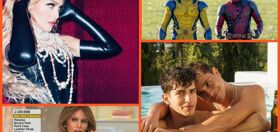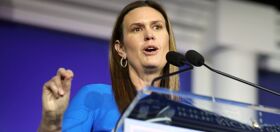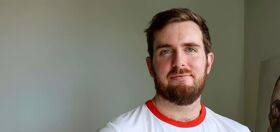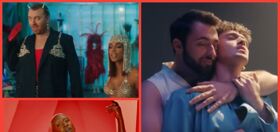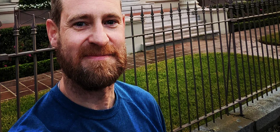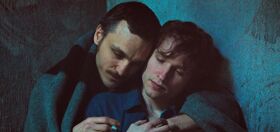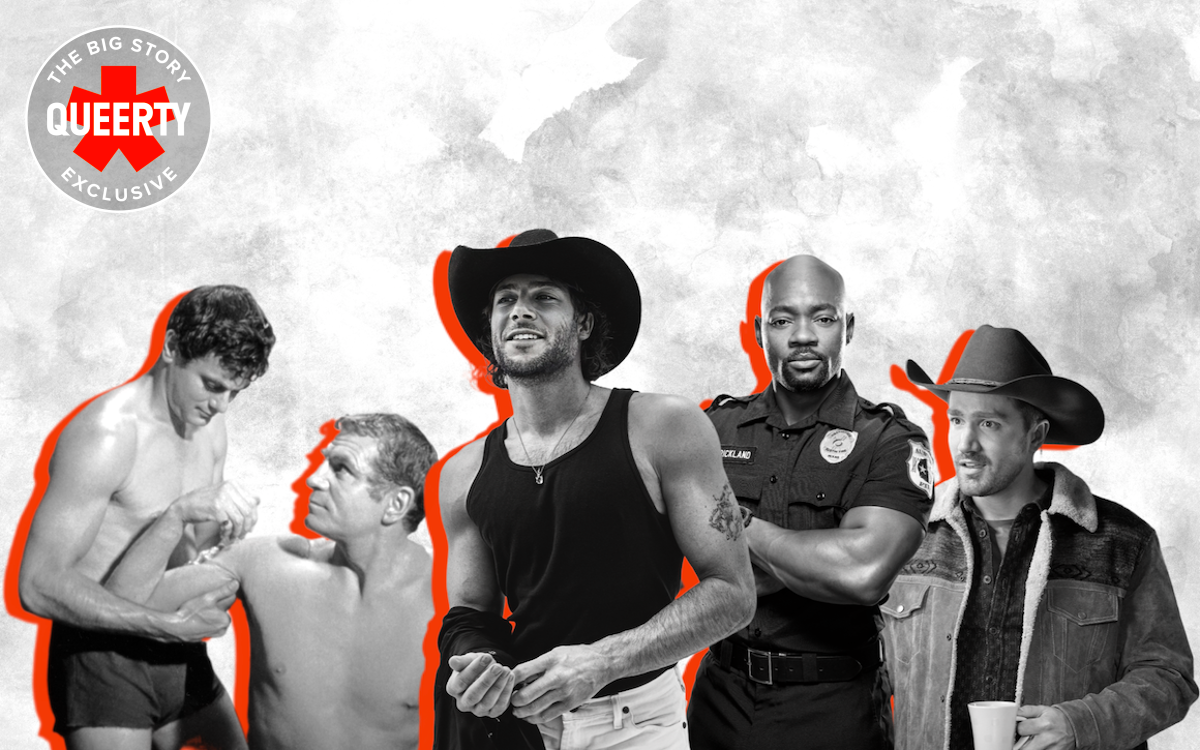
Tony Curtis and Laurence Olivier are submerged in a stone tub, their bare pecs shimmering behind a thin veil.
Olivier, as an aspiring Roman emperor, orders his slave (played by Curtis) to bathe him, then asks about his taste for oysters and snails — i.e., his intimate preferences — before declaring that he likes both. Cut from the 1960 release of Spartacus over obscenity objections, the scene was restored in 1991. And just like that, a would-be ruler of the highest order was bi again.
Hollywood has been masculinity myth-making since it first set images to film. The tradition stretches all the way back to the silent era: Men should be straight, of course, virile, courageous, and willing to sacrifice for honor and love, preferably while maintaining their cool. Bonus if they look hot in a loincloth, a wide-brimmed hat, or any uniform that says, “Trust me with the fate of civilization.”
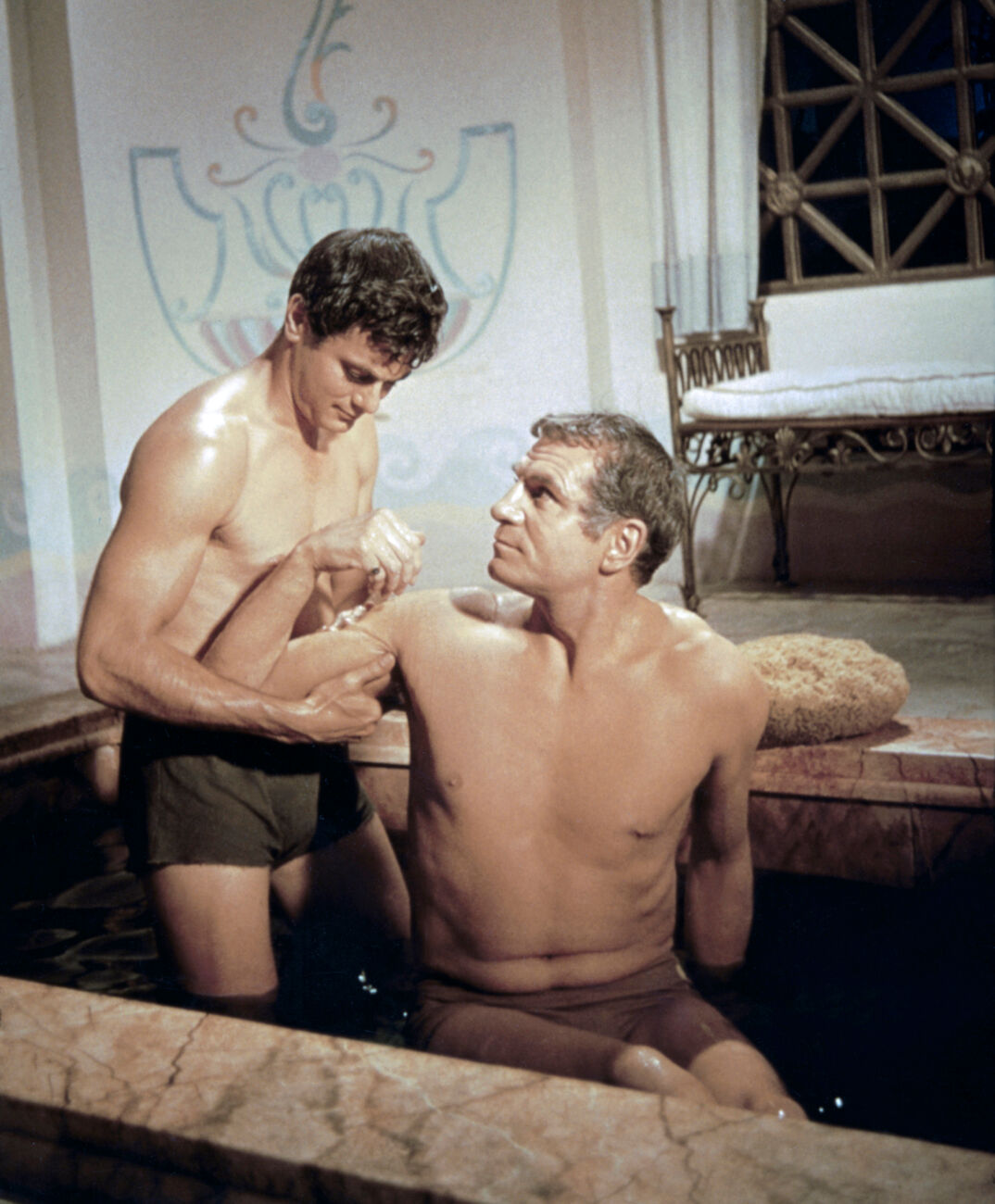
But queer people have been integral to stories about masculinity dating all the way back to ancient times. (We’re looking at you, Achilles and Patroclus.) And Hollywood has always been flush with queer artists, both behind and in front of the camera, telling stories that have simmered with subliminal same-sex desire, particularly between men who are meant to represent masculine ideals.
Over the movie industry’s century-plus history, those representations have evolved from unspoken undercurrents and queer-coded scenes into explicit narratives. On screen, Hollywood has gone from Montgomery Clift, the closeted matinee idol, suggestively comparing his pistol with another man’s in the 1948 Western Red River (“nice, awful nice”) to films about queer cowboys premiering at the industry’s top festivals.
Pedro Almodóvar’s short film Strange Way of Life, set in a desert town near the Mexican border and starring Ethan Hawke and Pedro Pascal as reunited lovers, riled the internet this spring with its debut at Cannes ahead of setting a release date. (It’s now set to hit theaters with wide release on October 6)
October also marks the 25th anniversary of Annie Proulx’s short story Brokeback Mountain, which inspired the groundbreaking 2005 film, a 2014 opera, and a new stage adaptation on the West End, starring Lucas Hedges and Mike Faist.
Also this fall, Gael García Bernal will star in Cassandro, the true story of gay wrestler Saúl Armendáriz from El Paso, Texas, who rose to fame in the lucha libre wrestling scene, defying its machismo conventions.
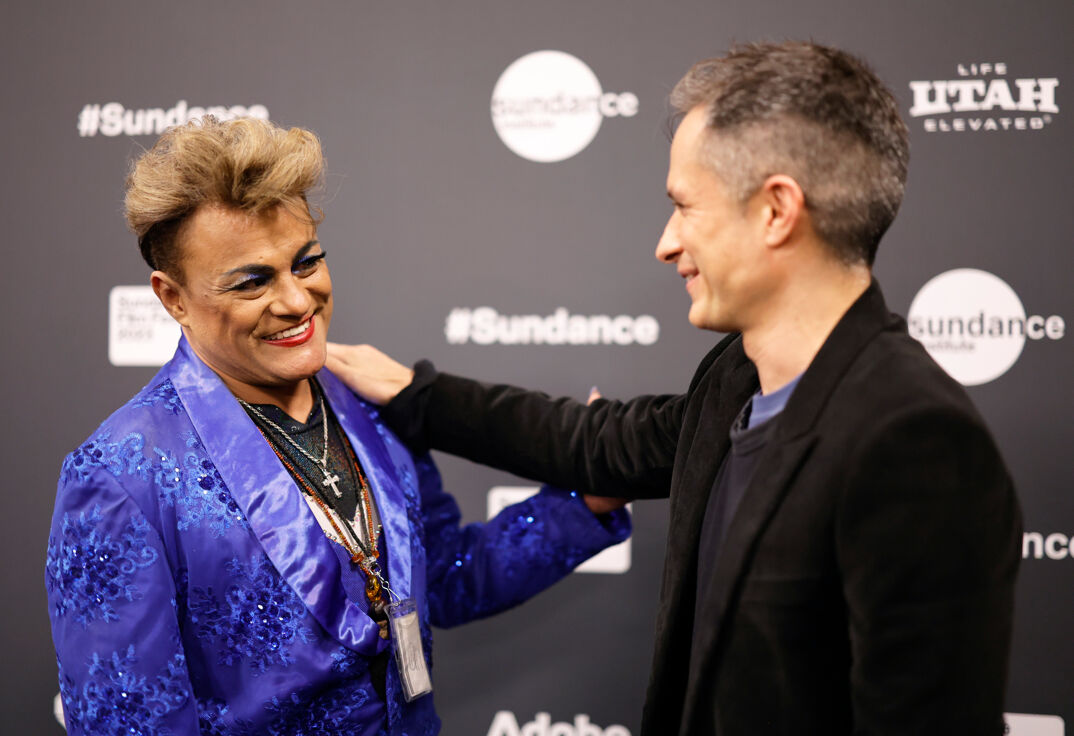
“The media we’ve grown up on has featured people in certain professions as heroes, all the way back to Westerns, where you have law enforcement versus the bad guys,” says Brian Michael Smith, who stars as a firefighter on 9-1-1: Lone Star, which has been renewed for a fifth season on Fox. Smith plays series regular Paul, a tough guy whose skill for assessing risk is rooted in his trans identity.
Queer characters are increasingly cropping up in a range of genres that have typically reinforced conventional norms and what it means to be a man. Smith’s portrayal, as well as others like Jake Foy’s out-and-proud cowboy on the Hallmark series Ride, herald a promising shift in how Hollywood conceives masculinity.
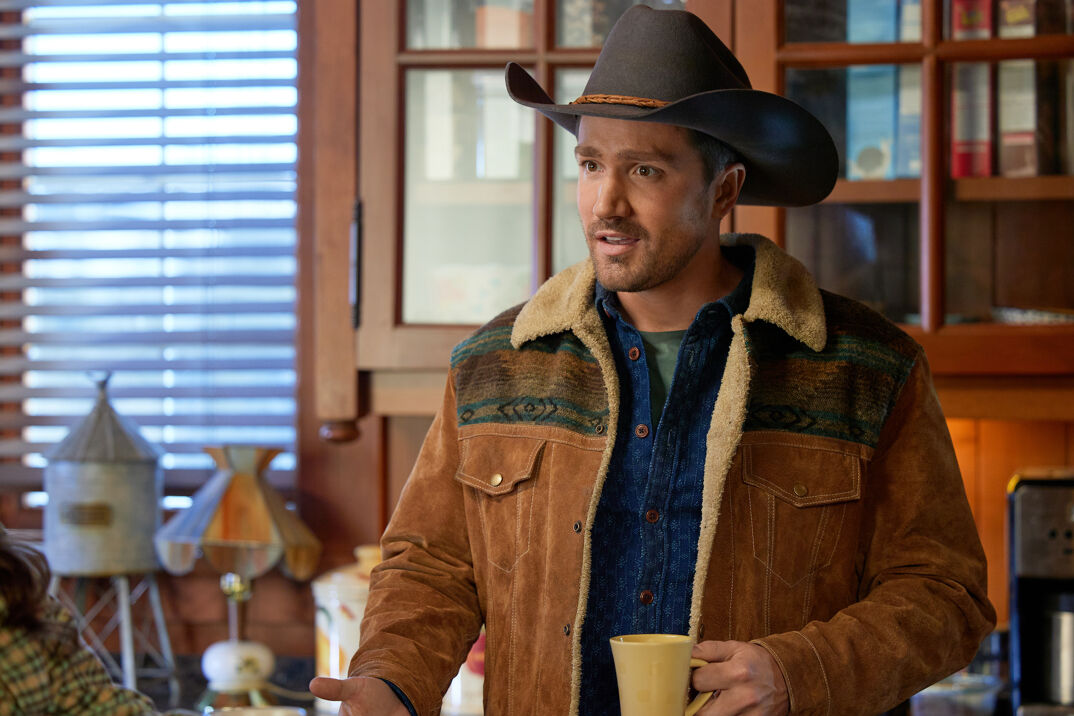
But what does it mean for queer characters to be visibly integrated into these familiar genres with their existing associations about what a man should be? And where, in many instances, we’ve been all along but were kept under wraps?
“There’s a cultural imperative to have media narratives about strong, traditional masculinity,” says Harry M. Benshoff, professor of media arts at University of North Texas and co-author of Queer Images: A History of Gay and Lesbian Film in America. “All of these cultural forms, whether they’re firefighter or cop shows or Westerns, showcase patriarchy as this wonderful savior.” And depictions of conventional masculinity have generally been positioned to provide viewers with a sort of comfort that all is as it should be. Recognizing that queerness has always been embedded in these conventions is one key to disrupting them.
Would audiences have swooned so hard over a pair of gay survivalists in The Last of Us (played by a butch and bearded Murray Bartlett and Nick Offerman) if they didn’t fit the image of the gritty and brooding frontiersmen Hollywood has long taught audiences to admire? Or is there something revolutionary about finding two men who love each other living on the edge of the earth and at the end of the world?
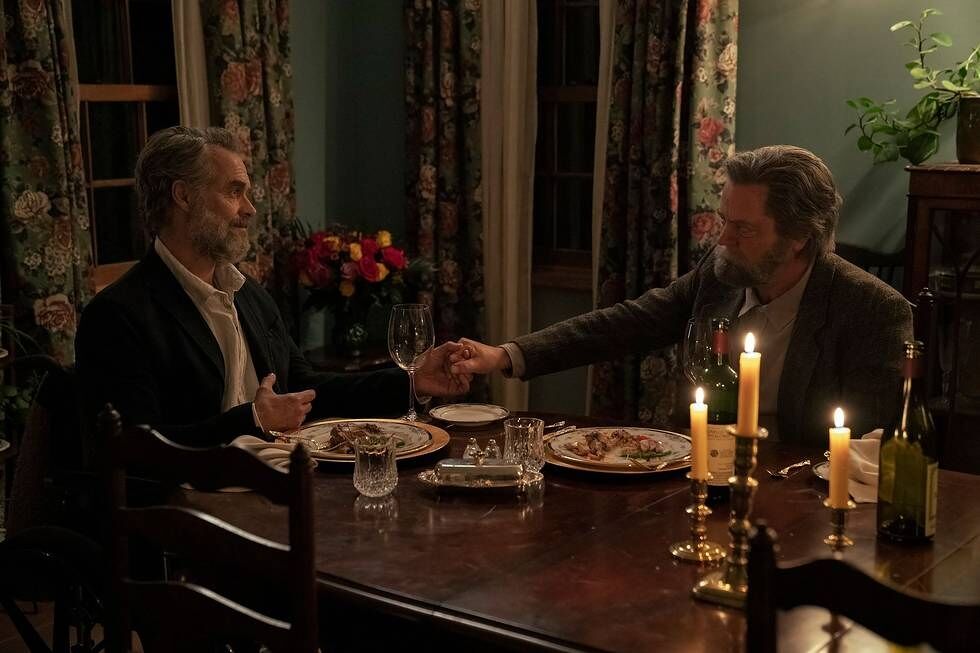
The fact is, queer people have always been integral to the stories that Hollywood tells about what makes a man. From actors like Montgomery Clift and Rock Hudson, who forged heartthrob ideals that endure today, to LGBTQ+ artists increasingly working behind the scenes and in front of the camera to expand cultural conceptions of masculinity. You just have to look — longingly, and with your hat tilted just so — toward the horizon of what’s coming next.
Related:
PHOTOS: 25 Rock Hudson pics that prove he was big in all the right places
Standing 6’4″, Rock Hudson was a whole lot of Hollywood. Here’s a look back at his life, both on and off screen.
Rock Hudson and the reinvention of man
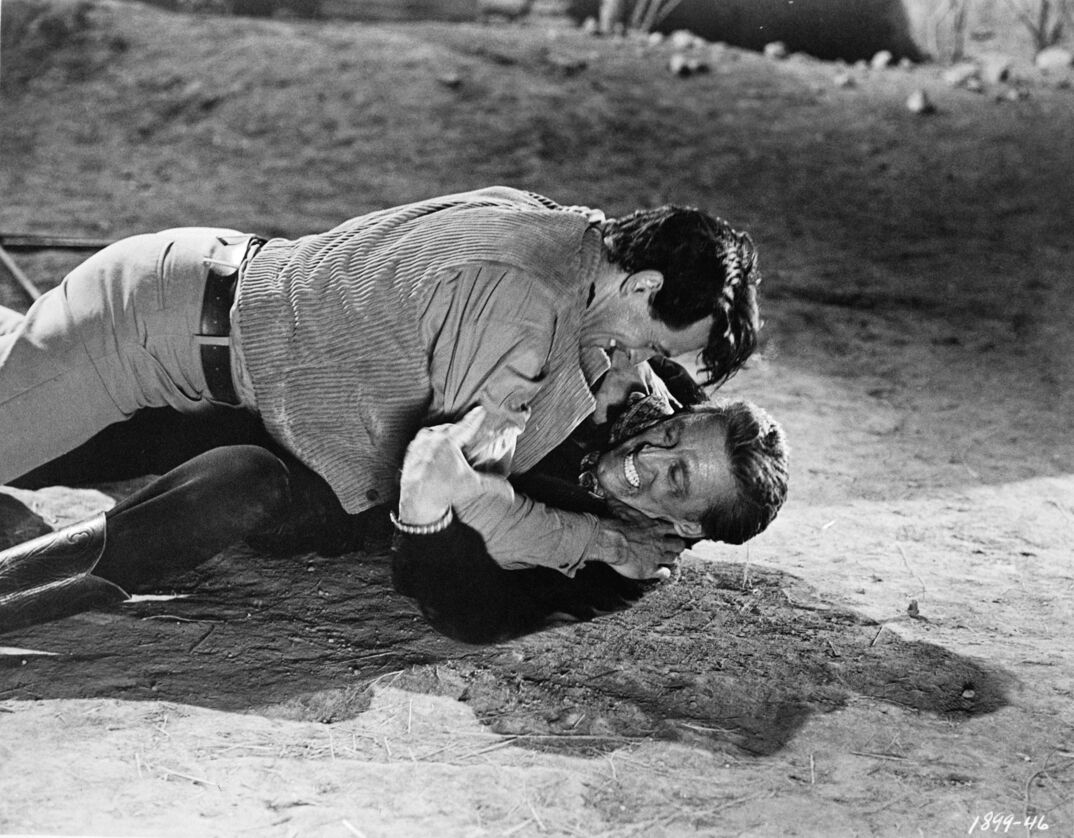
Hollywood’s hypermasculine ideal of the brawny and brooding hunk traces back to World War II, when recruitment posters and press photos of soldiers and sailors imprinted a heightened image of masculinity on the American public.
Though gay silent film actors like William Haines in The Desert Outlaw and Ramon Novarro as a swashbuckling prince in Across to Singapore drew attention before the war, the ideal of the muscle-bound hunk firmly arrived with the returning troops. Strapping men who survived the war flooded back looking for work, and some of them wound up in Hollywood, hoping to capitalize on the desire for their brand of manhood.
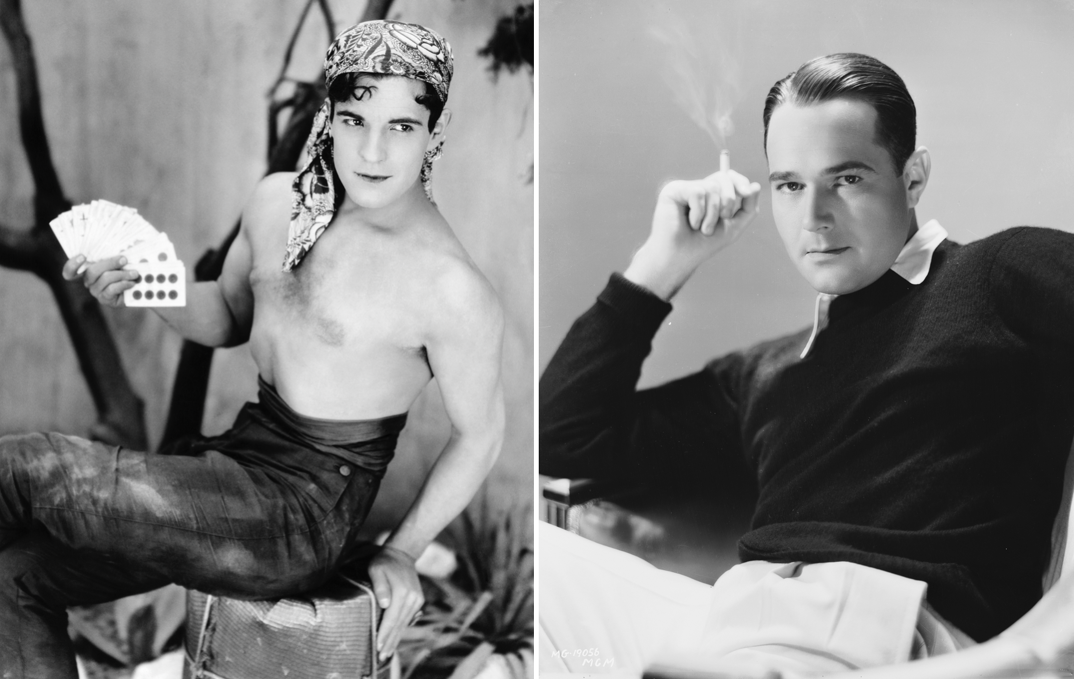
“All of a sudden, there’s this incredible shift in what the public wants to see,” says director Stephen Kijak, whose documentary Rock Hudson: All That Heaven Allowed, based on the biography by Mark Griffin, is now streaming on Max.
Hudson was one such veteran who became among the biggest movie stars of all time and a template for Hollywood’s shifting ideals of masculinity throughout his career of more than three decades.
That he embodied, and even to some extent invented, such ideals as a closeted gay man signifies that queerness has been embedded into Hollywood’s mythology of masculinity from the outset. (His transformation came courtesy of the gay, and rumored predator agent Henry Willson, who was largely responsible for crafting the era’s beefcake image.)
Hudson played a wide variety of leading men: a sea captain (in Scarlet Angel, 1952), a rancher (in Giant, 1956, for which he was nominated for an Oscar), as well as a lieutenant, a boxer, and playboys of all sorts. His dreamboat status was cemented by a string of romantic comedies opposite Doris Day, starting with Pillow Talk in 1959, in which it’s now very possible to read his particular appeal to women as rooted in his queerness.
“To portray the ultimate masculine, hetero ideal, I think being gay gave him an advantage in a lot of ways,” Kijak tells Queerty. “He’s presenting as the romantic ideal, but’ also the gay best friend, who can be comforting and sensitive to these women he’s playing opposite. In a way, his queerness was the key to everything.”
While Hudson was an idol to female viewers, Kijak notes that gay men were likely losing their minds over him as well. A number of his friends and former lovers talk in the documentary about their liaisons with Hudson, including Joe Carberry, who says the star’s endowment was so “sizable” that Carberry couldn’t bottom for him.
Indeed, by the 1970s, Hudson’s thick mustache and sun-kissed skin were signifiers of masculinity also found in gay erotica, Kijak notes, and the actor continued to function as a kind of two-way mirror. “He was evolving his own masculinity to fit the times, and it was constantly pressing up against that veil between the closet and the outside world,” Kijak says. “He was weirdly slowly revealing himself, whether consciously or not.”
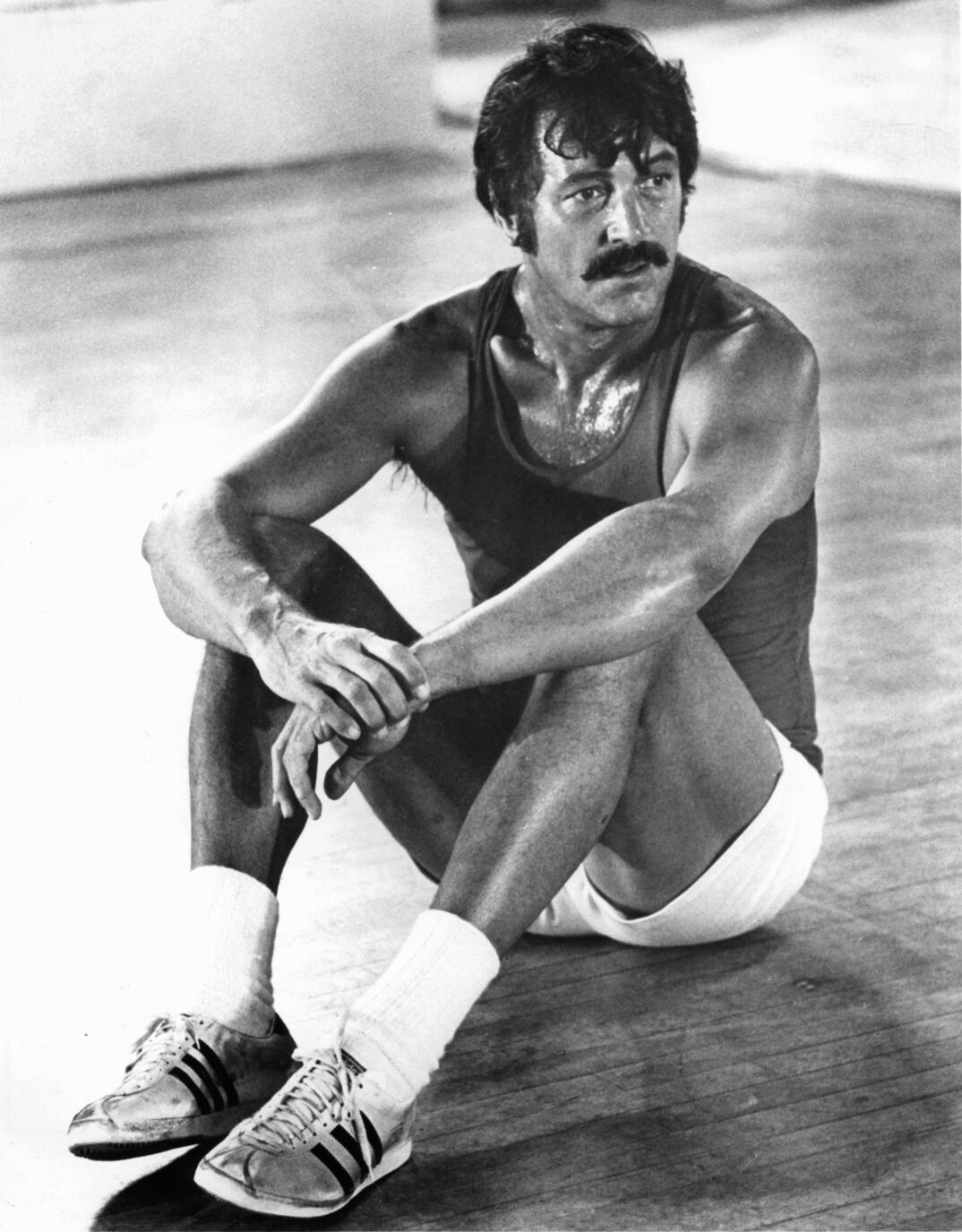
All That Heaven Allowed assembles clips of the star that are rich with double meaning, imagining a cinematic world where Hudson, who died of complications from AIDS in 1985, might have brought his true identity to the screen. Of course, we no longer have to imagine the possibility of explicitly queer characters in these stories. We can watch them for ourselves.
“Hudson starred in Westerns, war movies, adventure films, crazy swashbucklers — we have to keep pushing into these genres, populating them with queer characters, and subverting them to meet our own needs and desires,” Kijak says. “Because we’ve been there inspiring them all along.”
How ‘Brokeback Mountain’ queered the West
Tales of the American West have often simmered with homoeroticism that, whether intentional or not, can seem obvious in retrospect. Someplace where society’s rules don’t apply, and sharp-shooters roam around in boots and chaps? Sounds pretty gay to us.
Queer undertones rippled through Westerns for more than a century, including Owen Wister’s 1902 novel The Virginian, considered the first fictional work in the genre, in which the protagonist muses about the call of the wild (“What’s the gain in being a man?”), resting his head in his wife’s lap and fantasizing about a “roll on the sands” with a “little wild animal” or freedom from the conventions of domesticity.
But it was another century before the explicitly queer cowboy rode into mainstream consciousness with Brokeback Mountain.
Released in theaters nearly 20 years ago, the movie became a cultural touchstone we can’t seem to quit. “It was radical to put big, straight Hollywood stars in that context,” says Benshoff, who studied public response to the movie’s 2005 release. “Brokeback Mountain really destabilized masculinity,” Benshoff says, by introducing queer characters, played by Jake Gyllenhaal and Heath Ledger, into what has “always been the most American and traditionally masculine of genres.”
Particularly in Texas, the heart of the American West, “there was a lot of pushback, saying, ‘How can they take the great American cowboy and do this horrible, degrading thing to him?’” Benshoff recalls. But the film was also a critical and box office smash, becoming one of the highest-grossing LGBTQ+ movies ever released. And the story has an enduring appeal that has continued to reach new audiences in dynamic forms.
Actor and playwright Ashley Robinson, whose stage adaptation of Brokeback Mountain premiered on the West End this summer, considers that the movie strikes a chord on several levels.
“It shattered the myth of the American cowboy by humanizing it through Jack and Ennis,” Robinson tells Queerty. “At the same time, it shattered this caricature of what people thought gay men could be.” Robinson considers that gay men in rural areas may have recognized their experience reflected onscreen in a way it hadn’t been before.
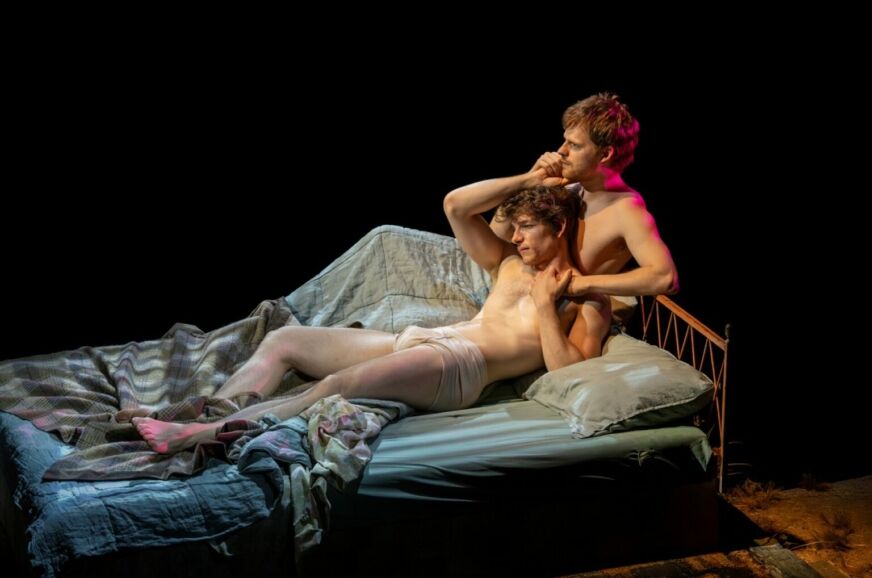
But what does it mean that these portrayals of queer men are still pretty butch?
“A gay cowboy may be more likely to pass” for straight, Benshoff says. “He’s not going to embody the flamboyant cultural sign that drag queens or trans women represent, so he may be easy to ignore or overlook.” And the truth may be that’s what makes these characters more relatable to mainstream, straight audiences. At least, that was likely the case when the movie was released, its romance between straight, masculine Hollywood stars resonating with millions of viewers worldwide.
Observing audiences at the London theater where Brokeback Mountain played through August 11, Robinson recognizes that people relate more closely to the story than ever before. Seating for the production was intimate and in the round so that audiences could see one another as the romance between Jack and Ennis unfolded. At the performance I attended, there was a palpable emotional response to the tragedy of two lovers kept apart by homophobia.
“They see themselves in it,” Robinson says of the production’s audiences. “Whereas before, there was a distance between them and a gay story, now there isn’t. The breaking down of that wall is really moving to witness.”
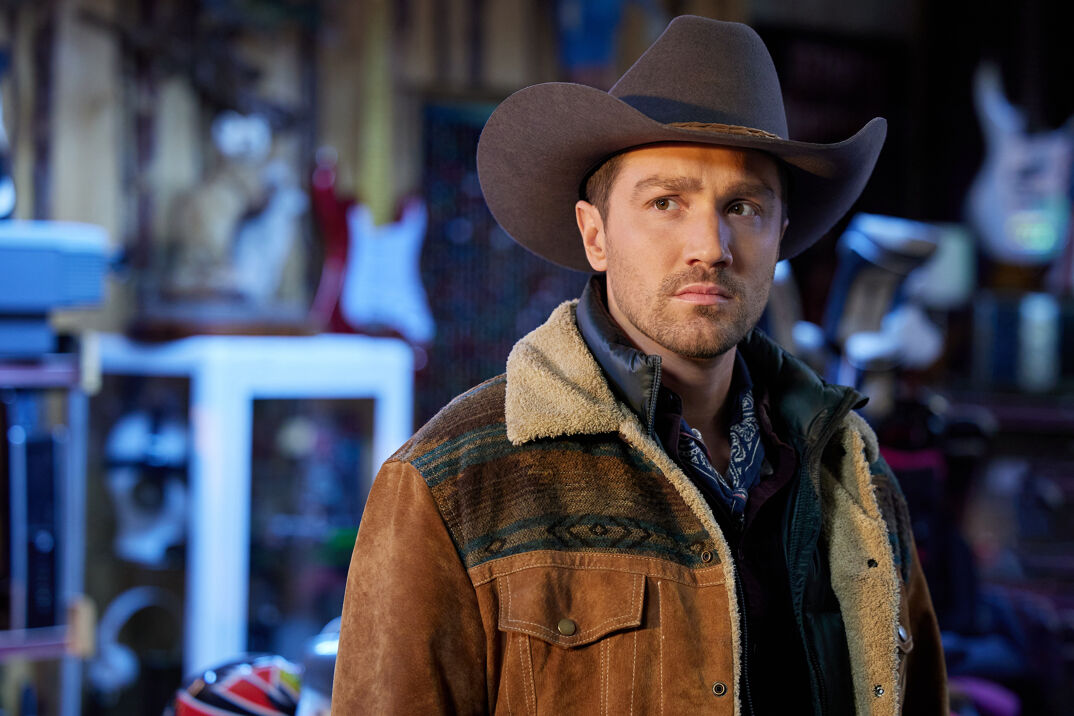
Growing LGBTQ+ visibility also means recognizing the queerness that’s been inherent to cowboy culture all along. “I joke that there are more sequins at the rodeo than at a drag show,” says Jake Foy, who plays out and proud cowboy Tuff McMurray on the Hallmark Channel series Ride. Foy notes a natural blurring of gender norms in rodeo culture that creates a sense of freedom around notions of identity.
“Without all of the rigid animosity that sometimes comes with our current discussion around gender and identity politics, the women of the rodeo are actually quite gritty, and the men of the rodeo are actually quite showy,” Foy tells Queerty. “In that nonbinary is actually a lot of space to connect.”
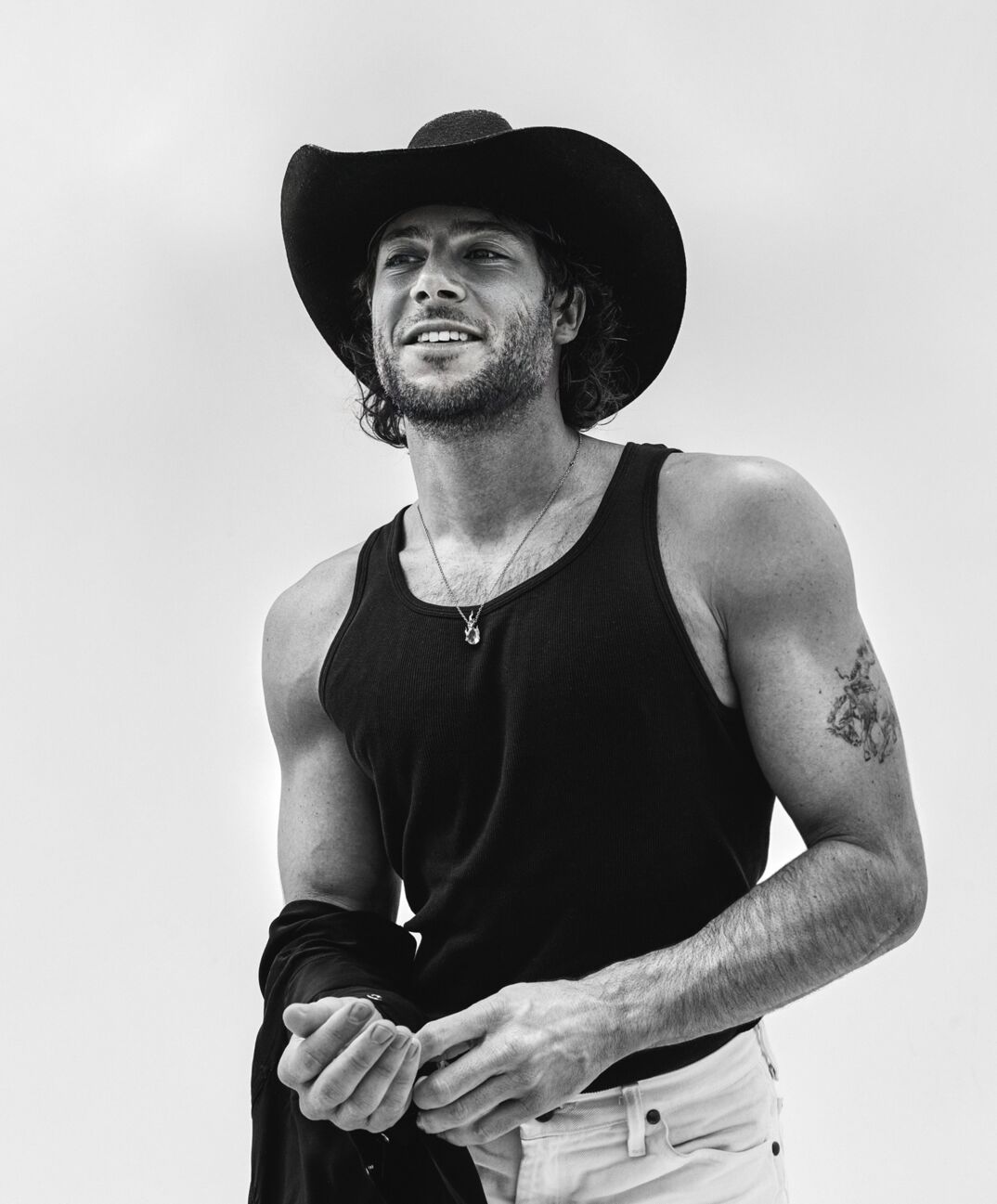
Filmmaker and photographer Luke Gilford documented queer rodeo culture in his 2020 photo series National Anthem, the inspiration for his debut feature film of the same name, which premiered this September at the Toronto International Film Festival.
The photo series features portraits of those involved with the International Gay Rodeo Association (IGRA), the sole organizing body for queer cowboys and cowgirls. Gilford, who was born in Colorado, grew up with cowboy culture but came to feel alienated by the homophobia he found inherent to mainstream rodeo. But he felt a sense of community among the IGRA and realized the expansive possibilities inherent to the queer rodeo.
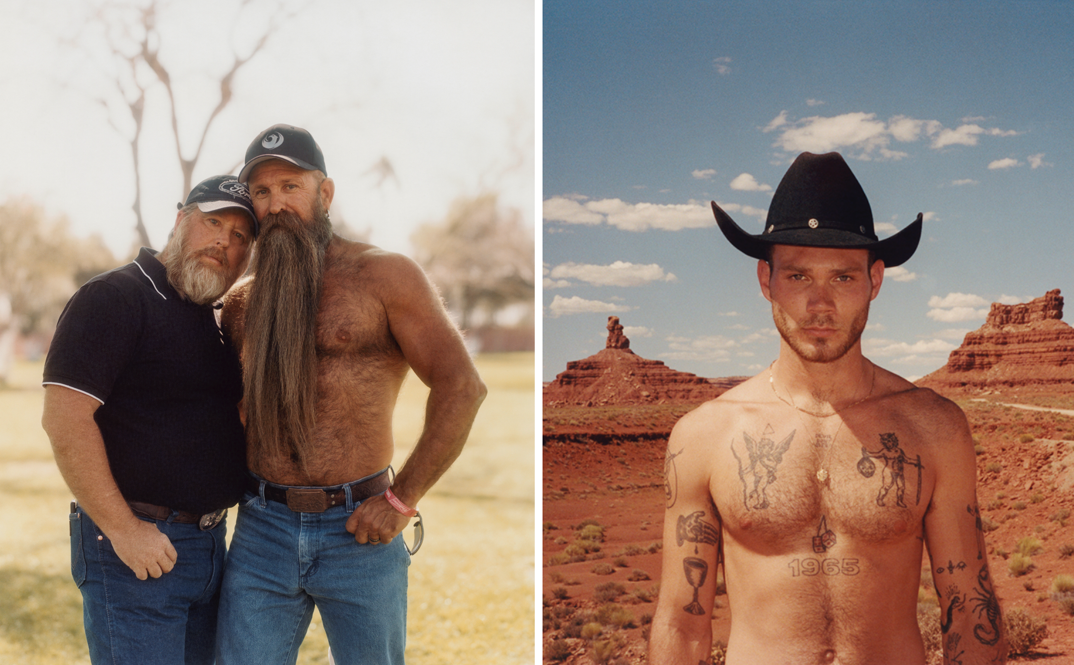
“I discovered that one of the great powers of the queer rodeo is its ability to disrupt America’s tribal dichotomies that cannot contain who we really are,” Gilford says in press notes for the film.
“National Anthem celebrates the beauty and resilience of the typically invisible queer bodies living their lives, discovering themselves, and falling in love within rural America,” Gilford says of the film, which stars Charlie Plummer as a young construction worker who becomes enthralled with a community of queer rodeo performers in rural New Mexico.
“To me, these are the figures who return the aura of promise to the concept of America,” Gilford says. “They expand what it means to be an American, as well as what it means to be queer in both subtle and profound ways.”
‘9-1-1- Lone Star’ lights a fire on a more expansive definition of masculinity
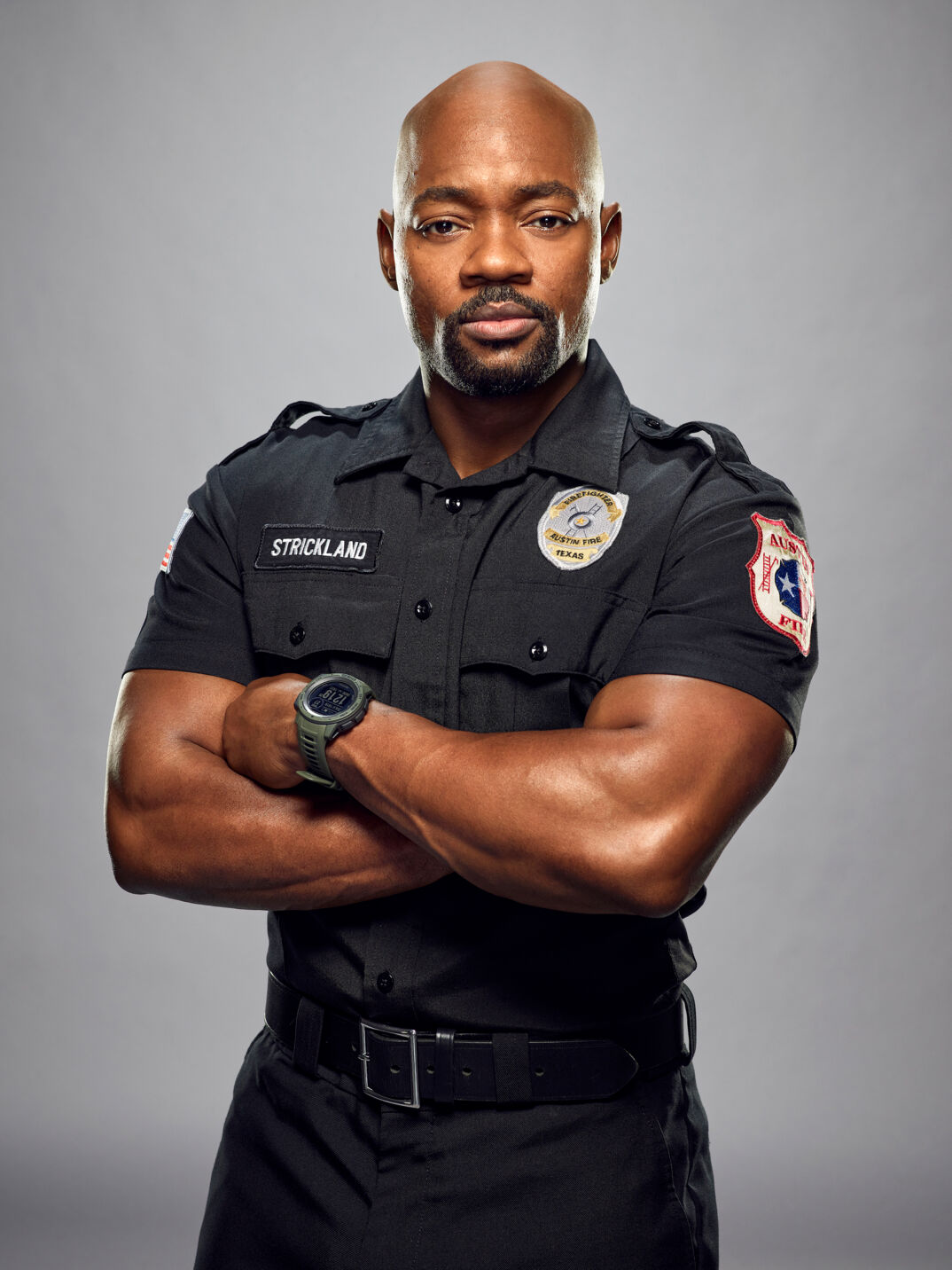
Disrupting ideas about what it means to be a man is one of the overarching themes of 9-1-1: Lone Star, recently renewed for a fifth season on Fox. While there may be an outlaw element to cowboy characters, the firefighters of Lone Star represent a more civically sanctioned and diverse breed of good guys (some of whom also happen to be women) who rescue people in need week after week.
“Good people are being harmed in our culture right now, with legislation attacking them for who they are. So I think we gravitate toward the kind of media where things are clear — this is the good guy, this is the bad guy, and good is going to win,” Smith tells Queerty.
Including a trans person as part of that heroic,good-guy fantasy is especially meaningful and even reparative, considering Hollywood’s long record of maligning trans people as villains up until the past two decades. Smith, who is also featured in Disclosure, the 2020 documentary from director Sam Feder and producer Laverne Cox that traces the history of trans representation on screen, emphasizes how powerful and impactful media images can be for trans viewers.
“It allows for people who might be like me — for people who are Black, or trans, or don’t know exactly who they are — to see that there’s a place for them, and it’s not always a bad place,” Smith says. “They can be a hero. Everybody needs to see themselves being better than what they’ve been able to be. You need to have possibilities modeled in the media.”
Those possibilities have grown more varied in recent years, with series that showcase queer and trans characters and their specific communities. But imagining a trans character like Paul in the context of a rescue procedural has particular resonance for Smith.
“When you think about who inspired you or what gave you hope, you think of heroes,” the actor says. “Firefighters are revered as heroes because their priority is to protect life without judgment. It’s incredibly uplifting to see a trans person in that space when most trans people’s life spans are shorter than the average, especially Black trans women,” says Smith, who turned 40 this year.
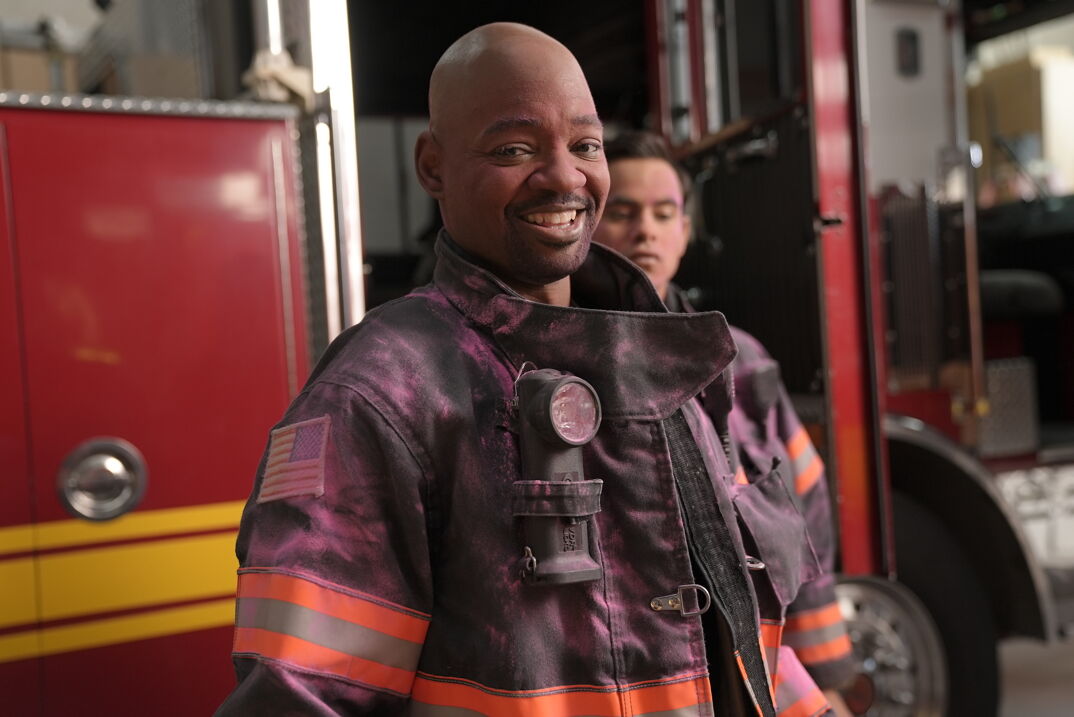
Smith also sees his character as part of what he calls Lone Star’s “kaleidoscope of masculinity,” with each man on the show demonstrating a unique expression of manhood and questioning what they’ve been taught a man should be. Owen, the series lead played by Rob Lowe, for example, is the father of a gay son (played by Ronen Rubinstein) and leads the firehouse with compassion, Smith says.
The more the media can challenge norms around masculinity rather than dutifully reinforce them, the more varied and truthful its depictions can become.
“There’s a critical need to reevaluate what we’ve been taught masculinity is because it’s suffocating. It’s so rigid and unforgiving,” Smith says. And the models of masculinity that Hollywood has portrayed all these years, whether allowing for queerness or guarding against it, ultimately distort reality.
“When you look at what masculinity is, at the people around you when they’re not trying to perform, it’s so rich and vibrant and cool and beautiful — when men are able to just ‘be,’ ” Smith says.
“If we could let go of the idea of masculinity and realize that what we already are is enough and amazing and unique — man, we’d be in such a different place.”
Interviews with Jake Foy, Stephen Kijak, and Brian Michael Smith were conducted before the SAG-AFTRA and Writers Guild strikes.
Photo illustration by Matthew Wexler. Photo credits: Sunset Boulevard/Corbis via Getty Images, Josh Telles, FOX/Justin Stephens, David Brown/Hallmark Media.
This article includes links that may result in a small affiliate share for purchased products, which helps support independent LGBTQ+ media.

